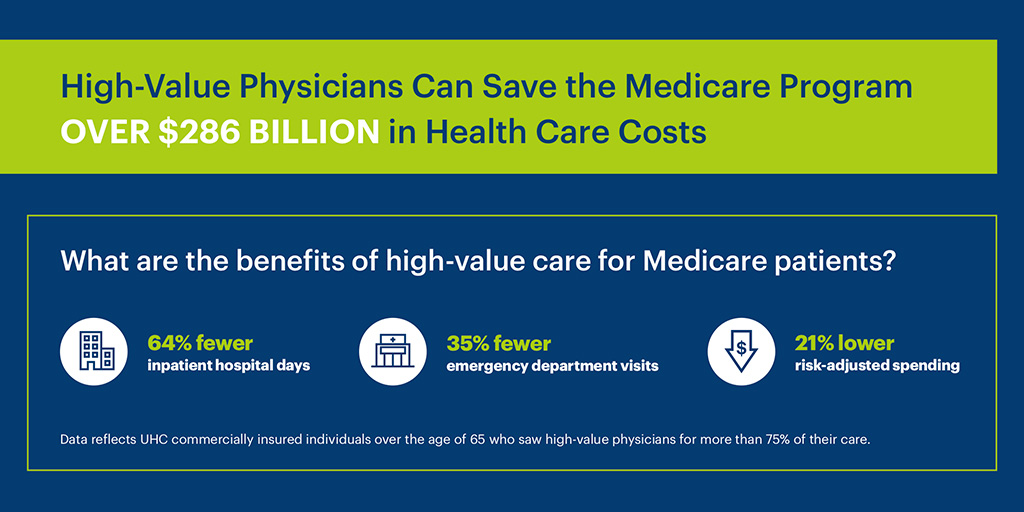Health care spending in the United States is expected to nearly double between 2017 and 2027, according to the Centers for Medicare & Medicaid Services. However, there are four areas where major savings are achievable:
- Avoidable hospital emergency department visits
- Rising hospital prices
- The high cost of specialty drugs
- Care delivery by high-value physicians
This article focuses on the benefits of high-value physicians.
Why High-Value Physicians Matter
High-value physicians meet the quality and cost-efficiency criteria established by the UnitedHealth Premium Program. The UnitedHealth Premium Program draws upon quality metrics from the National Quality Forum, the National Committee for Quality Assurance (NCQA), and other leading clinical quality organizations. Cost-efficiency measures are based on local market benchmarks for cost-efficient use of resources and referral patterns in providing care.
Both quality and cost-efficiency benchmarks are set annually and all physicians in UHC’s provider networks are evaluated against them each year. High-value physicians are designated as Premium Care physicians by UnitedHealthcare. High-value physicians have higher rates of compliance with evidence-based medicine and lower rates of complications and revisions than other physicians.
In other words, high-value physicians achieve better outcomes for patients at lower costs. If all U.S. physicians caring for Medicare FFS patients who meet quality criteria were to become high-value physicians by meeting the cost-efficiency criteria, the Medicare program would save $20.5 billion in 2020 alone and $286.8 billion between 2020 and 2029, according to UnitedHealth Group research. These savings represent a 4% reduction in annual Medicare FFS health spending. In the process, seniors would realize savings through lower premiums and out-of-pocket costs.
High-Value Physicians Deliver Better Care at Lower Costs
In 2018 patients over age 65 with UnitedHealthcare commercial insurance who saw high-value physicians for more than 75% of their care had:
- 64% fewer inpatient hospital days (717 fewer days per 1000)
- 35% fewer emergency department visits (82 fewer visits per 1000)
- 21% lower risk-adjusted spending than other patients ($95 lower per member per month)
High-Value Physician Savings Opportunities by Specialty
The difference in per-patient or per-episode cost between high-value physicians and other physicians varies by specialty. Primary care physicians represent the greatest total savings opportunity: If primary care physicians caring for Medicare FFS patients who meet quality criteria were to become high-value physicians by meeting the cost-efficiency criteria, the Medicare program would save $14.5 billion in 2020 and $202.9 billion between 2020 and 2029.
Improving the cost-efficiency of cardiologists, neurologists and pulmonologists who already meet the quality criteria for high-value physicians could save seniors and the Medicare FFS program $4.3 billion in 2020 and $61.2 billion over 10 years.

.png)
Share This Story